Welcome to the latest addition of our Show Us Your Space series, where we explore and celebrate the unique music-making environments of studio owners, independent builders, and musicians at all levels.
Today, we're checking out Dimension 70, an extremely cool studio that houses a collection of gear—from ribbon mics to outboard compressors—whose uniqueness matches that of the physical space itself.
Keep reading to hear all about Dimension 70, straight from the owners. To learn more, check out its website here.
Have you assembled a great practice space, project studio, or music workshop? Be sure to drop us a line at [email protected].
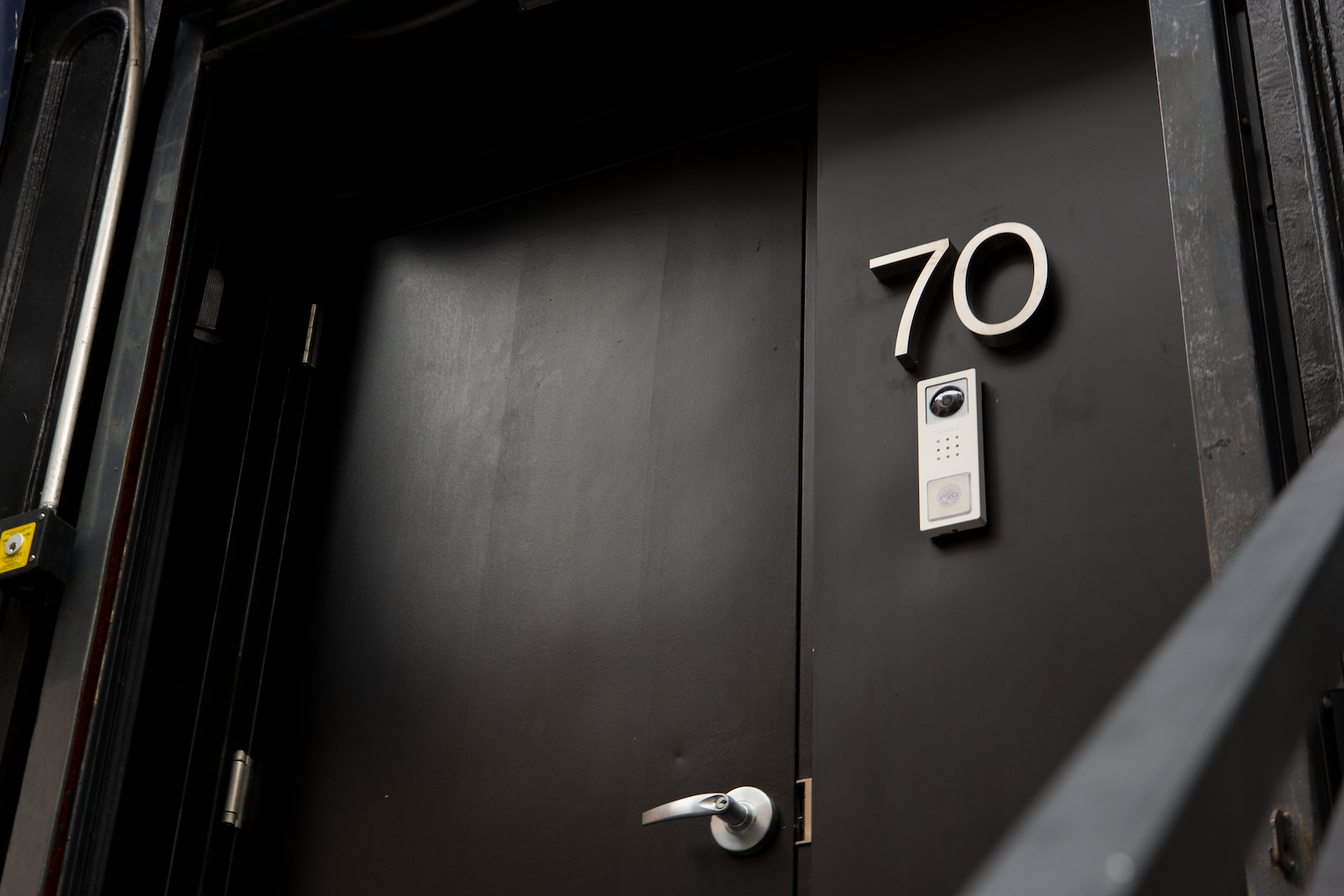
Welcome to Dimension 70… virtually! Hidden in plain sight in a building that has lived as a synagogue, a prohibition whiskey still, a raincoat factory, and an artist loft, it seems right that the next step in a diverse list of past tenants would be a recording studio.
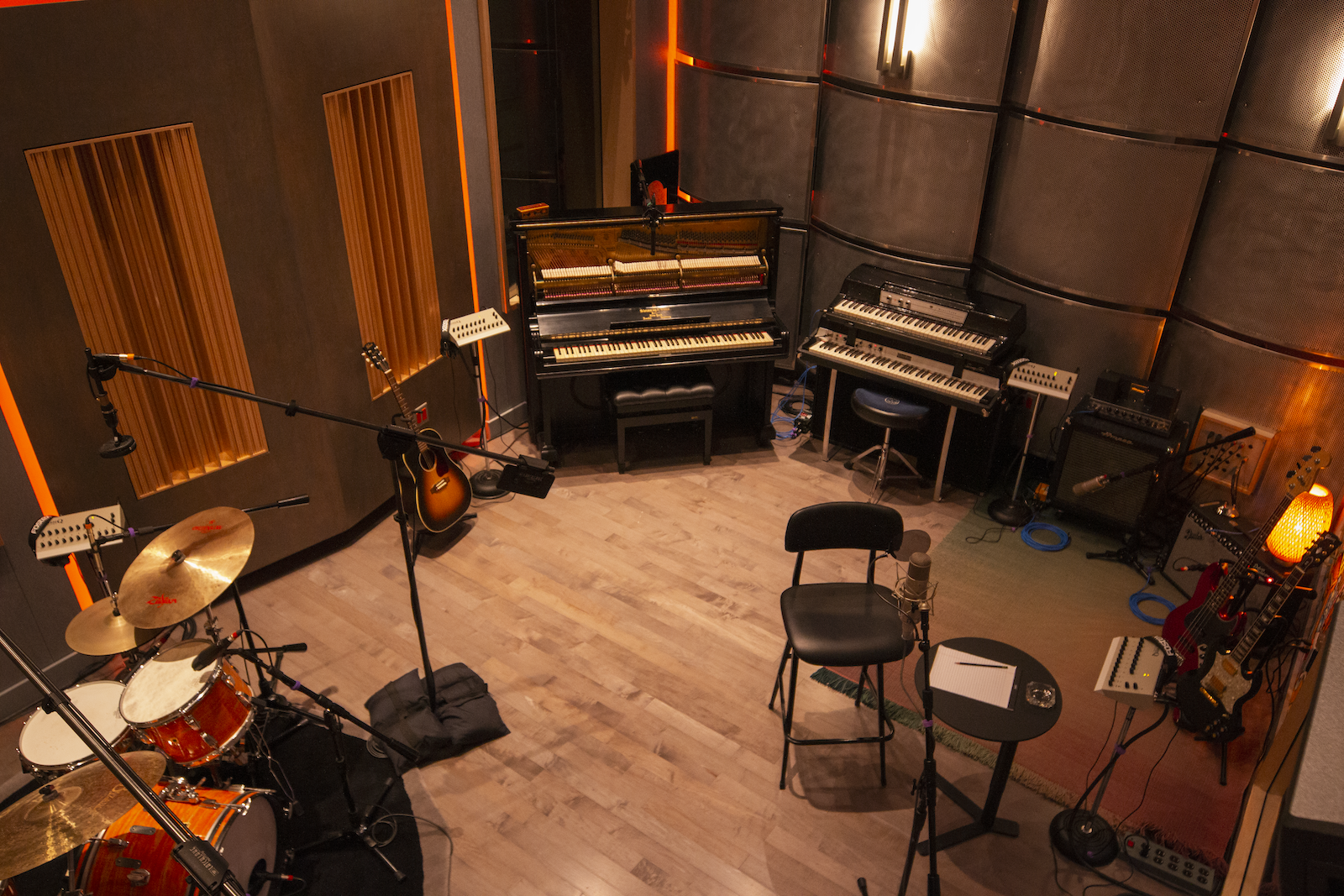
The studio still has traces of its previous lives all throughout the building. The live room in particular retains much of the atmosphere of a hallowed space, aided in part by the custom stained glass artwork we had installed in space left behind by the building’s past life as a synagogue.
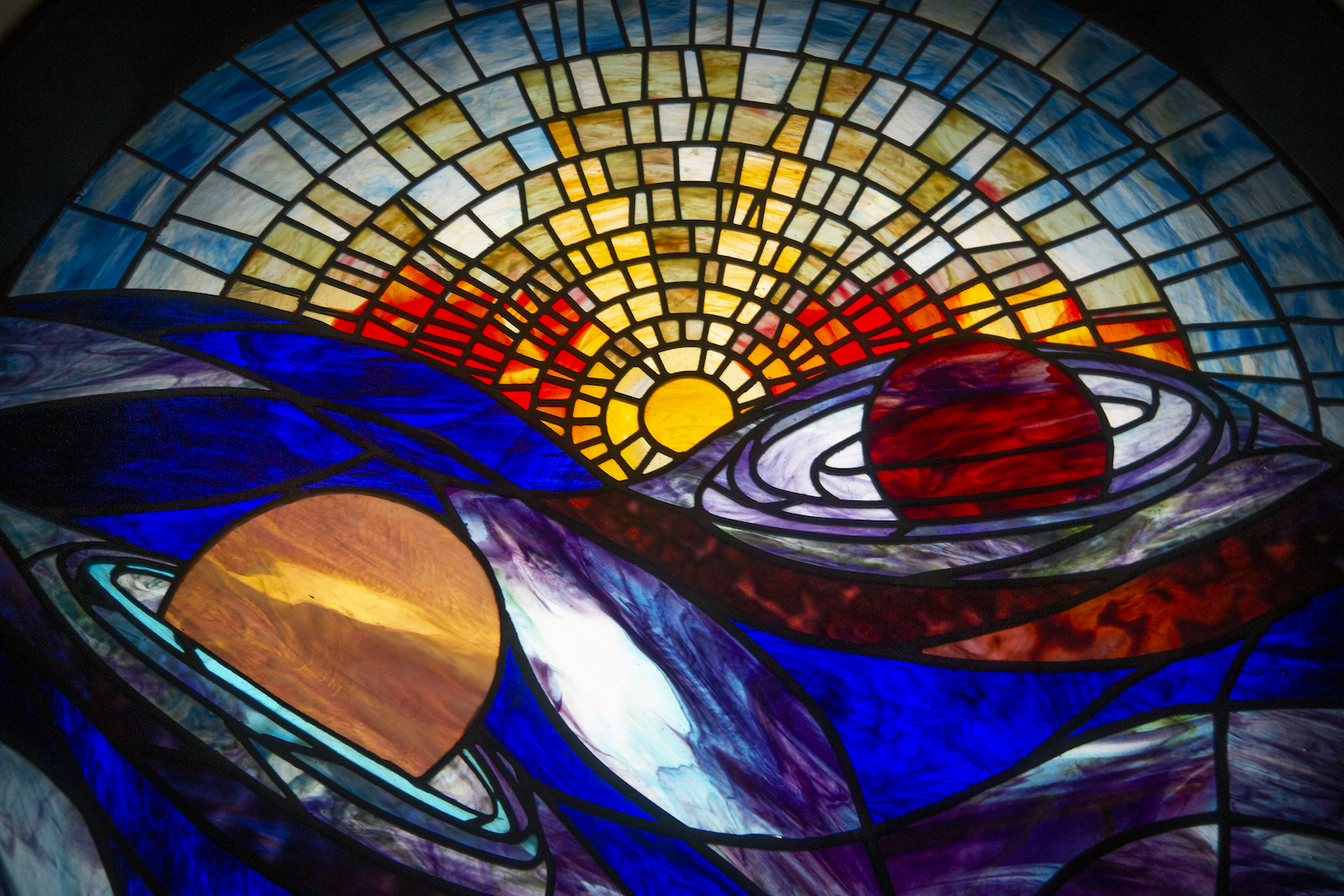
On the opposite end of the room is a massive space mural painted by Miami artist Marlon Pruz. The idea was to create this blast in the wall that exposes the strange spacey world that lies beyond. The architecture is supplemented by acoustic treatment and room design by Francis Manzella of FM Design.
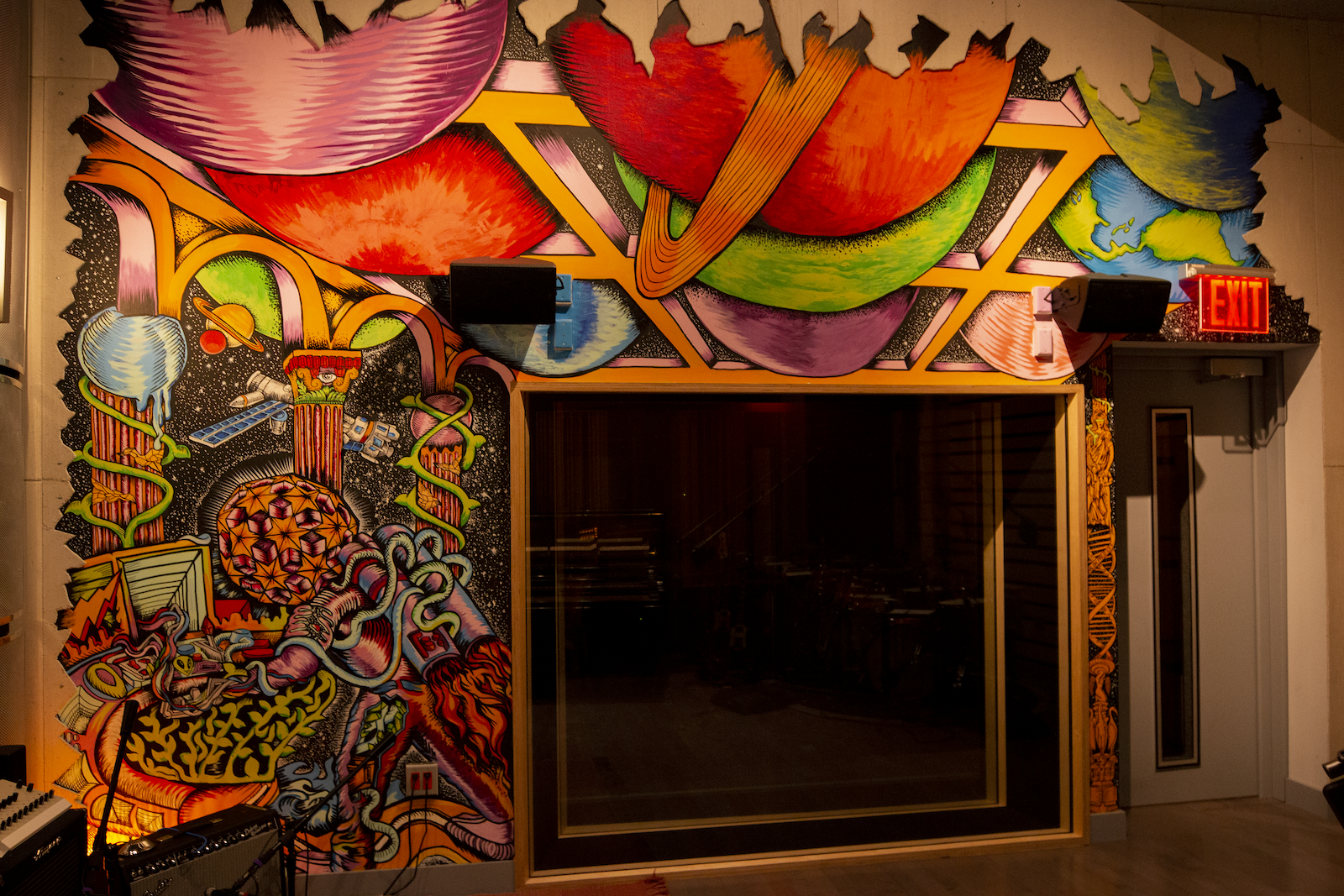
Another piece of history at our disposal is our 1891 Steinway Model I Upright Piano that we found at Big Wrench Piano in Brooklyn. It’s been completely refurbished with new hammers and felts, but the soundboard, main structure, and ivory keys are all original. It has a special bite in the attack, but with a dark decay that resonates with the sound of the live room in a beautiful way.
One of its key companions is our custom Wurlitzer 214A from Chicago Electric Piano Co. Two of its special characteristics are its "Deep Space" sparkle finish and the "Smart Chop" mod, which allows the cabinet to be separated from the main unit.
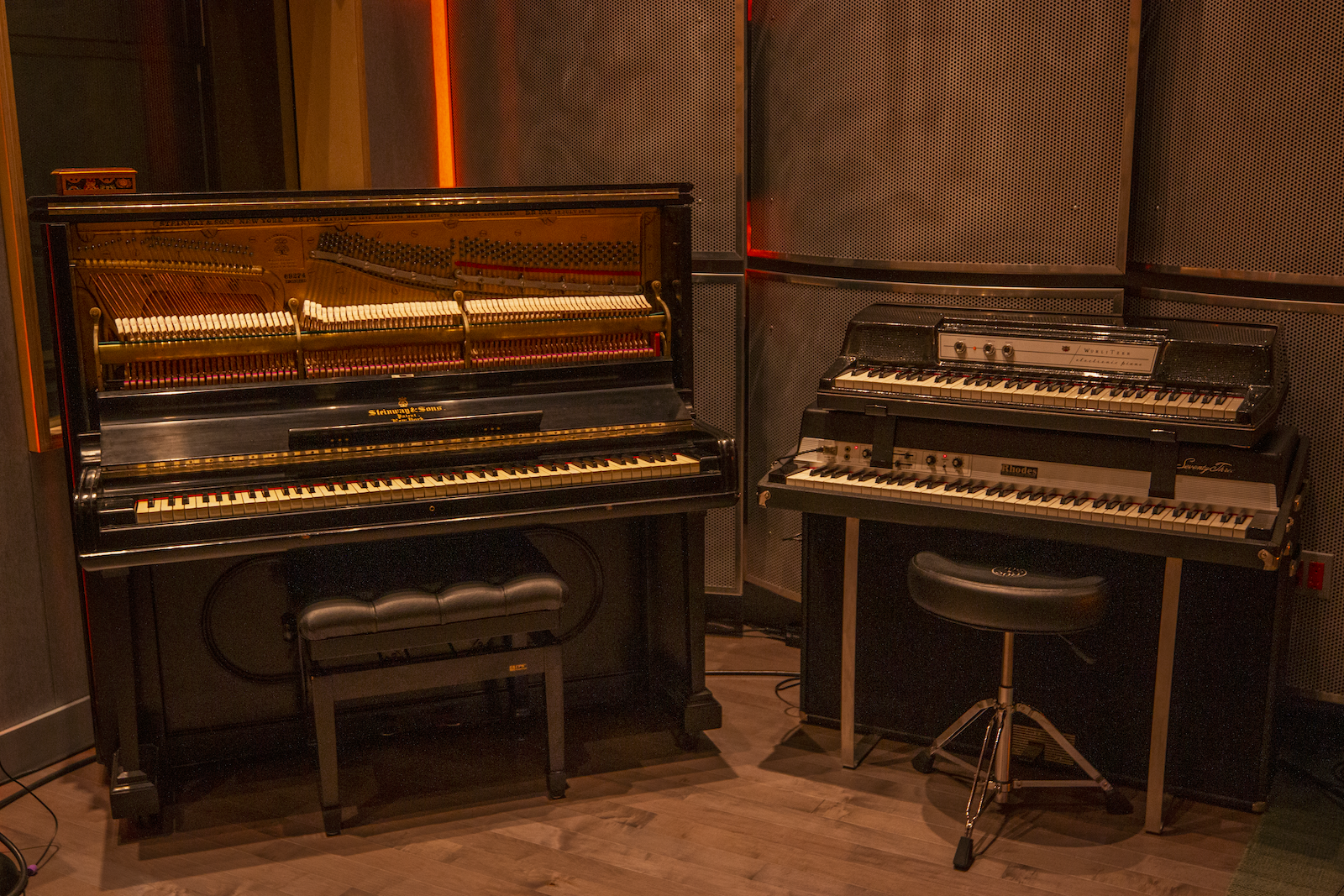
Tracking drums has become a big part of the sessions at Dimension 70, and we have two very special kits, the first being a late-'60s Ludwig Super Classic, with a mod orange finish, in classic sizes. The second one is a brand new Q Drum Co. kit, with a galvanized steel finish, in shallower, more modern sizes.
We drove all the way up to Springfield, Massachusetts to pick up the Ludwig (found through Reverb!) from Wood & Weather Drum Shop. It has that classic Ludwig thump that comes to mind when you think "vintage drum sound." On the flipside, the Q Drum kit was designed as a more forward and aggressive option that gives you a more contemporary drum sound.
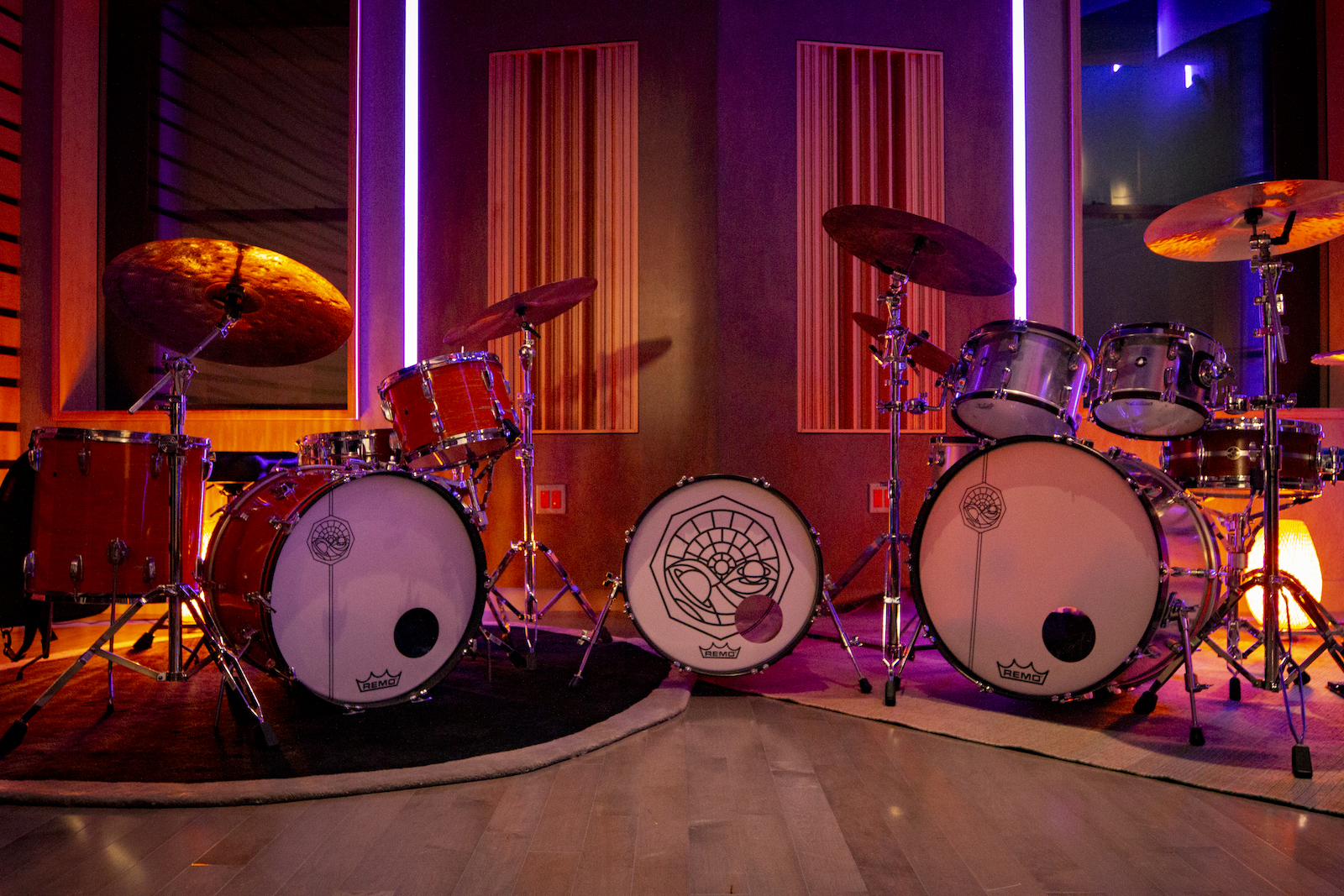
If you head into the control room, you’ll find that our Studio One is based around a versatile 32-channel API 1608-II. For us, it strikes the perfect balance between adding vibe and character to anything running through it, while still being very functional and straightforward for any visiting engineers. API consoles are great like that. You can route almost anything anywhere.
We have some very powerful Griffin 1.5s as our main monitors, as well as a wide selection of nearfield monitors, depending on what the client is looking for.
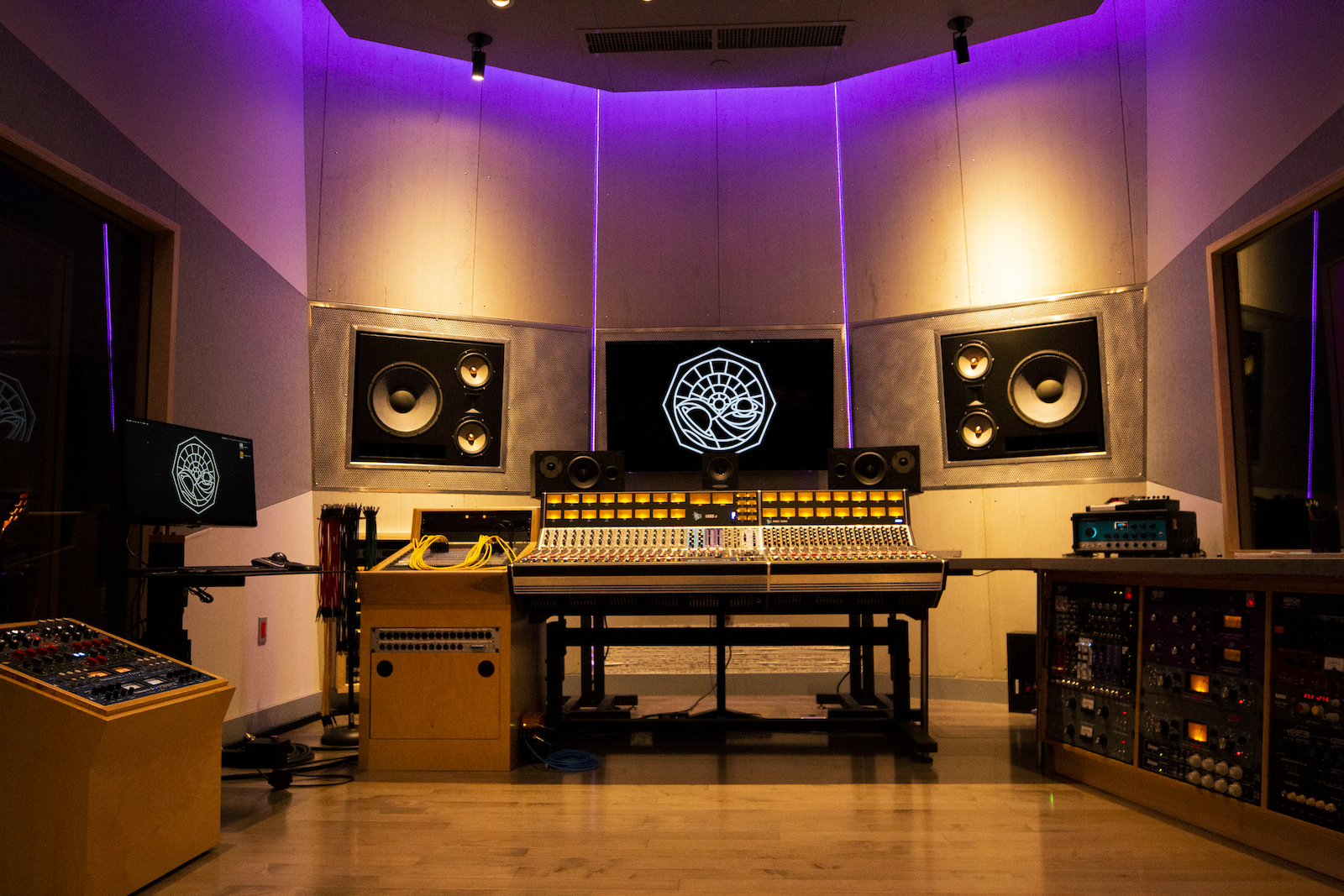
Our outboard selection is an interesting mixture of studio staples and newer pieces that are still familiar in function and workflow. We wanted the options to be enjoyable in use, but not what you’d typically find in a studio.
The idea is that an outside engineer could come in and still feel comfortable, but be able to say, "I haven’t tried this piece of gear before" or "I haven’t seen this in a while, I love this thing!" Standouts include our Vertigo Sound VSC-3, Pendulum ES8, FlexiGuy preamps, and our Purple MC77s.
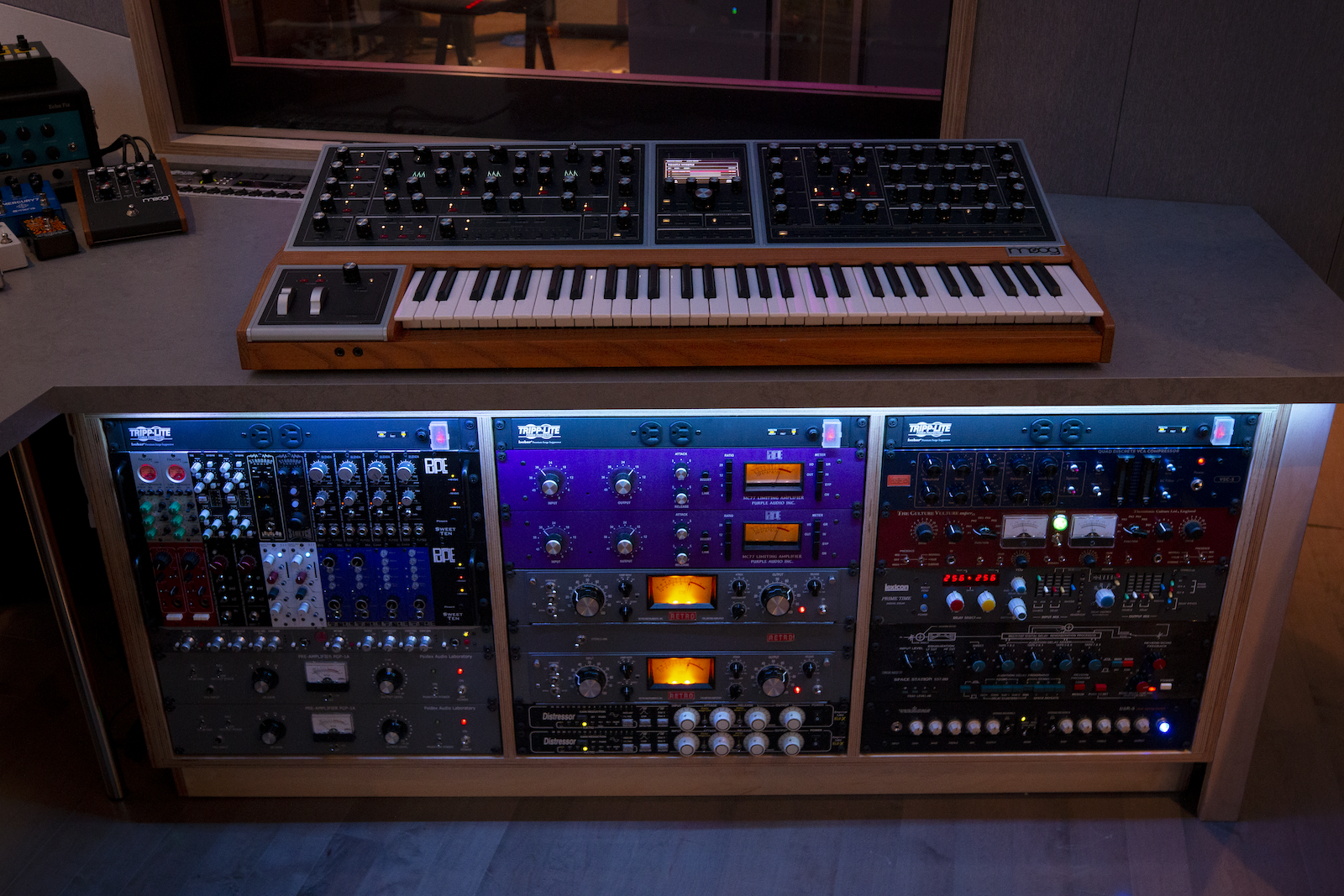
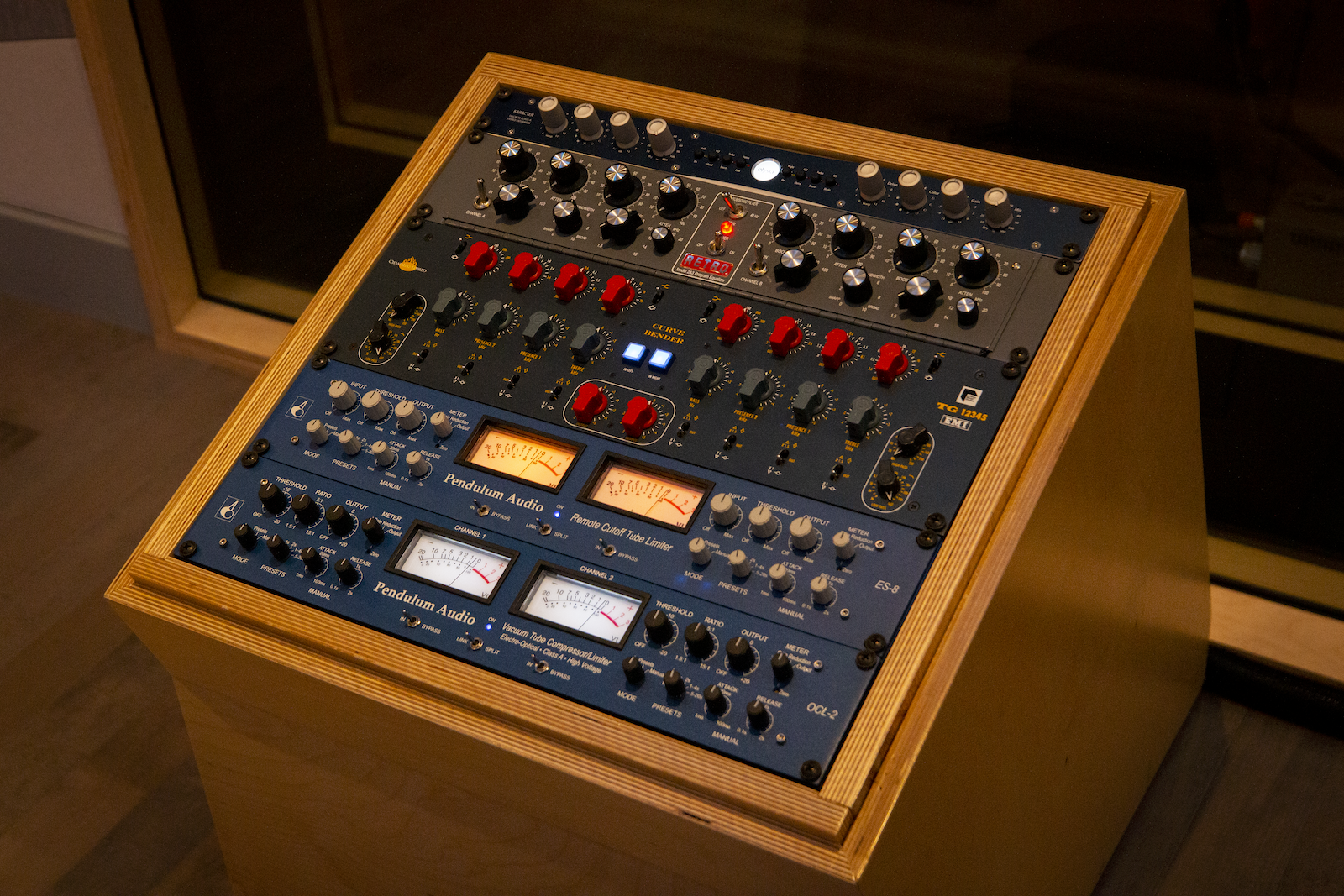
A particular subset of our gear that we are fond of is our effects selection. We have many options for hardware distortions, reverbs, and delays.
Some of our favorites include the Vermona DSR-3 Dual Spring Reverb, the OTO BAM, Ursa Major SST-282 and our Echo-Fix EF-X2. All of these are super fun to manipulate in real time and have many hidden tricks in them.
Sometimes we just just use the preamp section of the Vermona for saturation, or the Echo-Fix for oscillating feedback drops. There's also a ton of great guitar pedals to choose from.
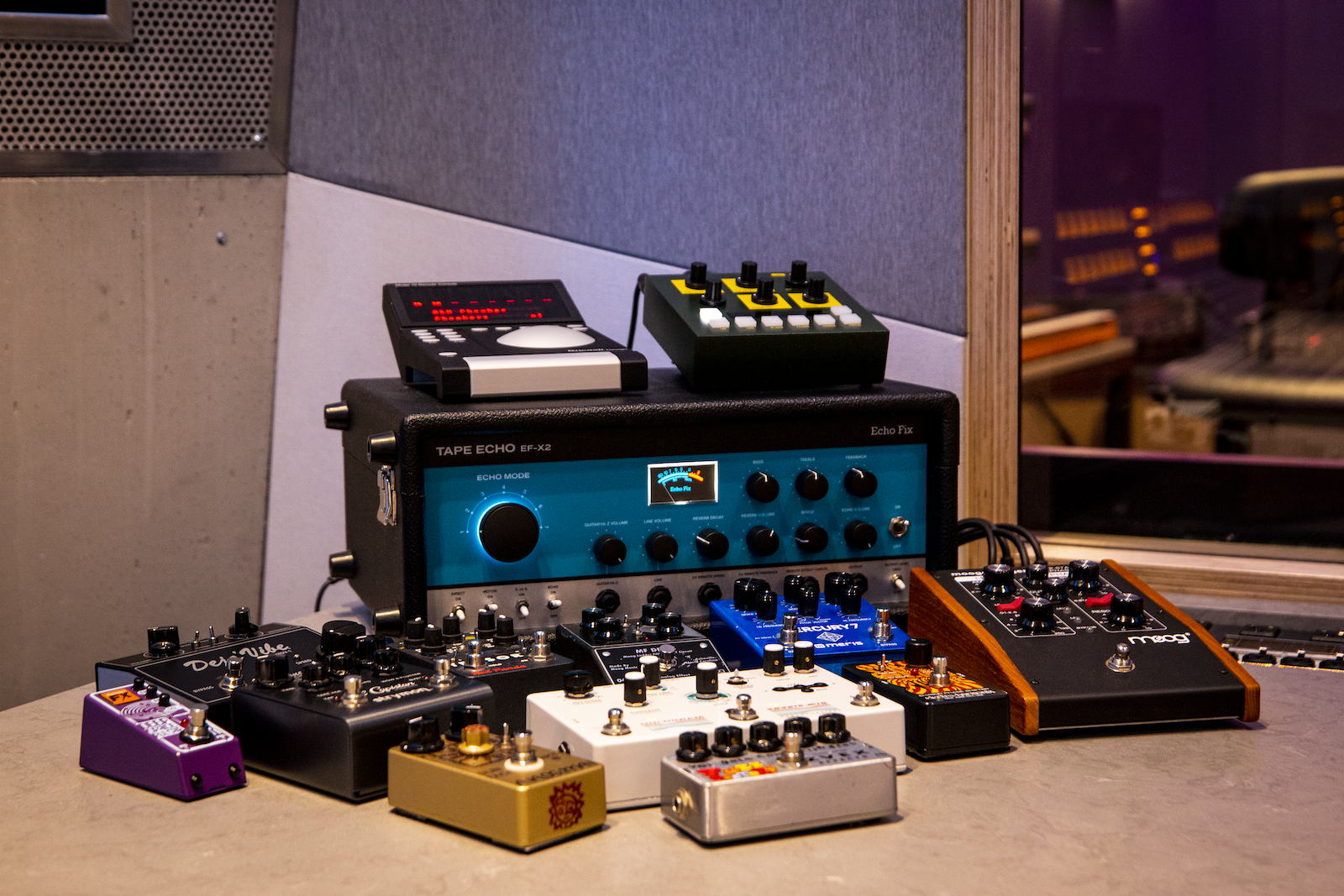
Our microphone locker is fully stocked for all types of instruments, voices, and timbres. A large percentage of our mics are ribbon, and contribute to the unique sound that we get here. A Royer SF-24 is one of our secret weapons in that regard.
Other special mics on hand are our pairs of AEA R44Cs, Microtech-Gefell UMT70S's, Neumann U 67 reissues, and of course our vintage Neumann U 47.
Serial #932 from 1957, this particular U 47 still has its original VF14 valve and has the most pleasant, natural compression characteristic that we’ve heard. We love seeing the look on our clients' faces when we have it set up.
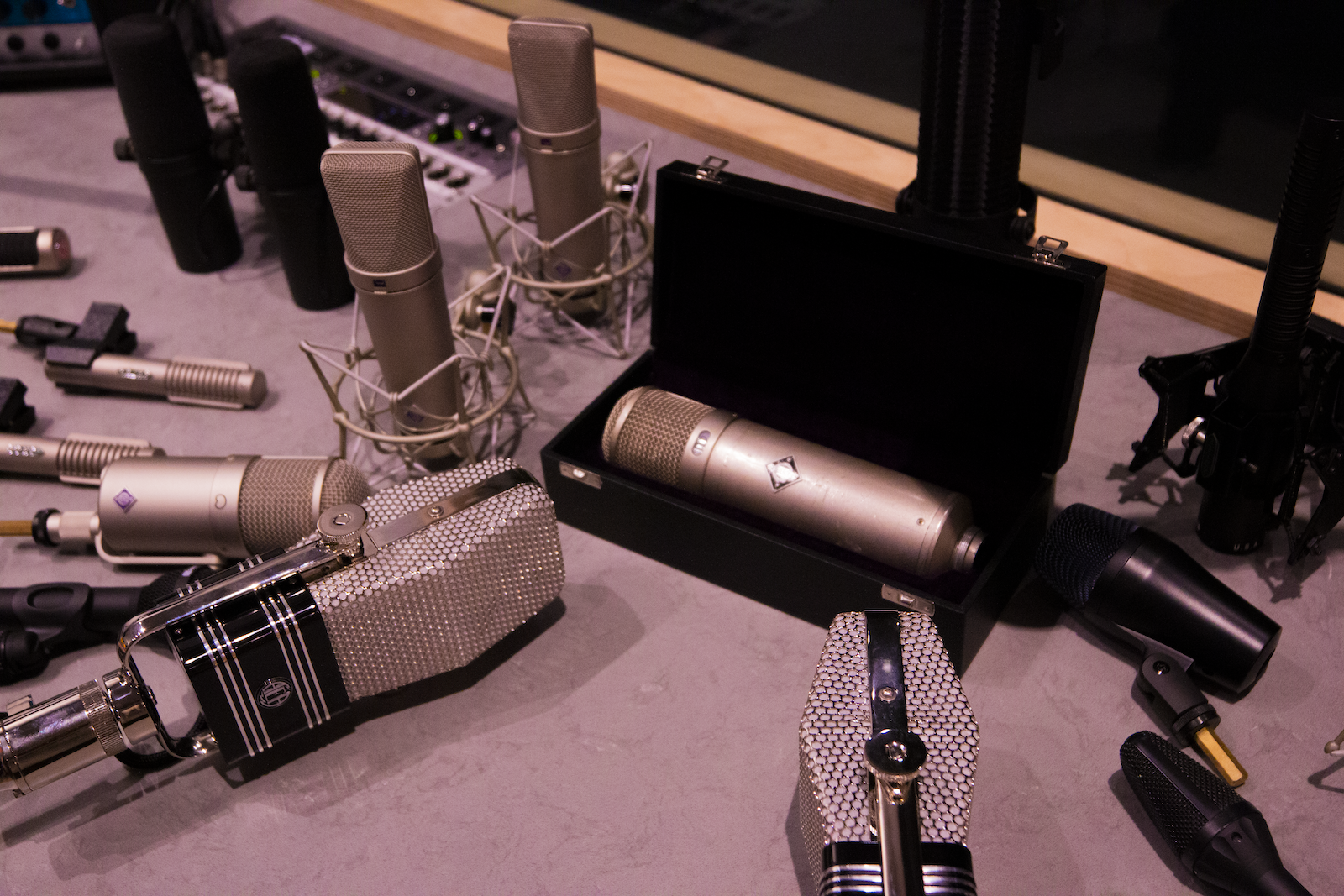
One last thing we want to share with you is our dedication to being as environmentally sustainable as possible. Recording studios have the potential to be wasteful with their supplies, so in areas where we can, we use reusable/recycled products. Our favorite examples of this mindset are our custom-etched reusable metal water bottles and the Souldier straps that we have on all our stringed instruments.
There are so many small details that we believe make our studio special, but these are the ones that as a team resonated with us the most. To schedule a visit and to find out more about our space, visit us at dimension70.com!
